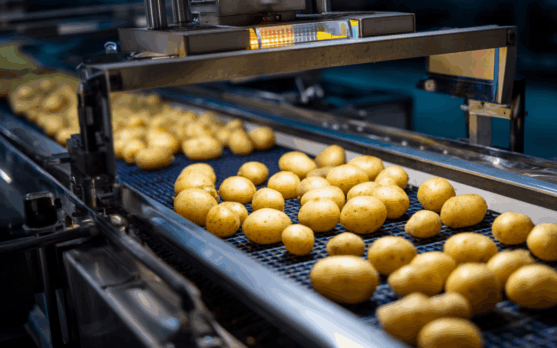The Code in Your Packaging
Your frozen meal isn’t just a snack—it’s a data point. From NFC tags to blockchain tracking and digital twins, packaging is becoming a powerful tech interface. In this episode, we decode how “smart packaging” is turning frozen food into traceable, interactive, and trust-building experiences.

We don’t usually think of packaging as technology. It’s just a box, a tray, a plastic film—right?
Not anymore.
In the frozen food industry, packaging has quietly evolved into something far more powerful than a shell. It's a sensor. A storyteller. A checkpoint. A contract of trust between a factory and your freezer.
Let’s start with something small but clever: NFC tags. You might’ve seen them—tiny circular icons or black squares printed near the barcode. They're not for decoration. Tap one with your phone, and suddenly you're inside the story. You’re not guessing when those raspberries were packed—you’re told. Where they came from. What truck brought them. What temperature they endured.
People don’t trust labels anymore. “Eco” doesn’t mean anything without proof. “Farm fresh” is a vague promise. But tech can anchor these claims in data. A tap on your phone becomes proof, not poetry.
And then there’s the blockchain. Not the crypto-mania kind. This one works behind the scenes, recording every frozen pizza, every temperature checkpoint, every stop along the journey—from blast freezer to your neighborhood store. It's a digital logbook that can't be altered, tampered with, or lost.
But most people never see that. What they do see—what they feel—is when their frozen salmon tastes like it just came off a boat. That’s the result of cold-chain integrity, and it’s packaging tech that guards it.
Let’s get even colder.
Some packages now include sensors embedded in the pallet itself. They track temperature, humidity, shock—even orientation. You’ll never know it, but the system does. If your lasagna tipped during shipping or spent two hours above -5°C, someone will know. And they might pull it before you ever touch it.
These aren’t theoretical systems. They’re here. A logistics director from a major European food group recently shared how a batch of ice cream was rerouted after a sensor picked up a power drop in a remote depot. No one noticed. The system did.
There’s something poetic about this level of vigilance. The product sits silent, frozen. But the packaging is alive—watching, recording, reacting.
Let’s not forget digital twins.
It sounds sci-fi, but it’s incredibly practical. Brands now create virtual replicas of product batches—exact 3D simulations that track how the physical product might behave under specific conditions. Too much vibration in the truck? Noted. Slight humidity shift over three hours in storage? Simulated. If the model says the real product might suffer, action is taken before anything melts or spoils.
In a world where one batch recall can destroy a brand’s reputation (and wallet), prevention is everything.
And now comes the consumer-facing layer: interaction.
Some packages invite you to scan a QR and discover more than ingredients. You get chef videos. Pairing tips. A cooking timer built into your phone. Or even a playlist to match your meal—yes, that’s real. It’s frozen food with a little soul.
Not all of this is necessary. But when done right, it feels… thoughtful. Human. And that makes frozen food feel less like industrial sustenance and more like a curated experience.
Of course, there are limitations. Smart packaging isn’t cheap. NFC tags, sensors, interactive platforms—none of this comes without cost. Some brands fake the tech edge with cosmetic QR codes that lead nowhere. Others overload the interface, confusing the user.
But the good ones? They’re setting a new baseline. Soon, scanning your frozen meal will feel as natural as checking the weather. A quiet assurance: “This was made well. Stored properly. Delivered cold. You’re safe.”
Packaging was once just a barrier. Now, it’s the bridge. Between tech and trust. Between producers and people.
Part of the series: COLD LOGIC Series Overview
Explore the full editorial series.
- 01. Eyes on Ice — AI-powered vision is cleaning up the coldest lines in food
- 02. Robot Arms & Frozen Meals — From dumplings to dinner bowls—robots now build your food
- 03. Rewriting the Freeze — Faster. Smarter. Colder. Inside the new freezing race
- 04. Warehouses Without Humans — In cold storage, robots run the show—quietly and efficiently
- 05. The Code in Your Packaging — How data, tags, and smart sensors reinvent traceability
- 06. Digital Twins & Maintenance Minds — When simulations fix problems before they happen
- Bonus episode: Frozen Futures — What Comes Next
Conclusion
Smart packaging turns frozen food into a story you can touch, scan, and trust. It blends technology with everyday interaction, pushing transparency, convenience, and connection into every meal.
Essential Insights
Packaging itself has gone digital. NFC tags, sensors, blockchain, digital twins—all elevate frozen food from commodity to connected experience. Smart packaging is the future of trust and traceability.




